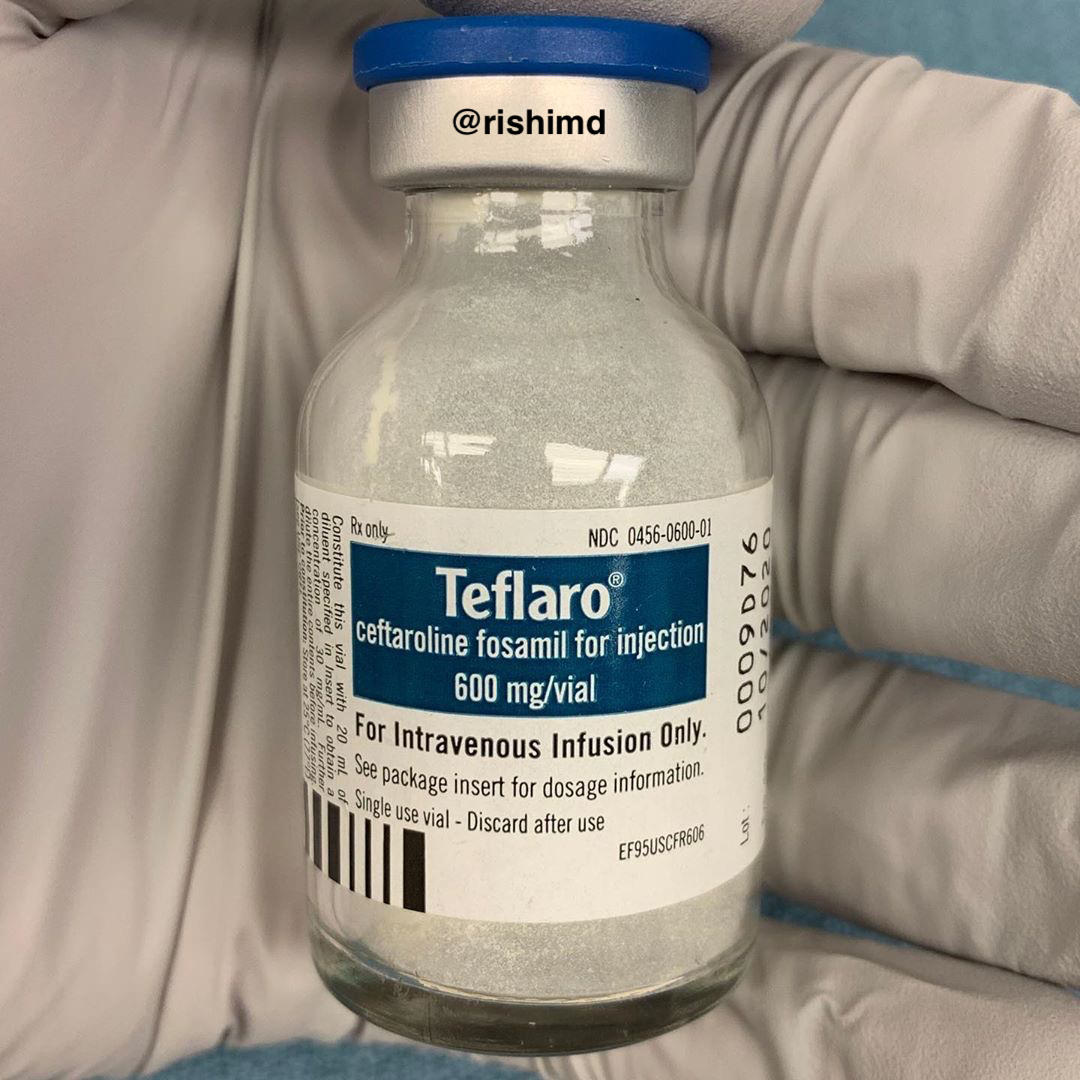Ceftaroline (Teflaro) is a fifth generation intravenous cephalosporin used to treat community acquired pneumonia (CAP) and acute skin infections. Similar to later generation cephalosporins, ceftaroline retains antimicrobial activity against many common gram negative bacteria with two important exceptions – Acinetobacter and Pseudomonas.
As an intensivist, Pseudomonas is an organism I have seen with varying degrees of antimicrobial resistance (even pan-resistance to the most modern antibiotics) causing clinically significant infections of the lungs, urinary tracts, and overwhelming sepsis. For this reason, ceftaroline is NOT a great option. However, I’ve used it many times for Staph, Strep, Klebsiella, and even E.coli infections with susceptibility profiles favoring the use of this novel cephalosporin (600 mg IV every 12 hours with adjustment for renal function).
Ceftaroline has great efficacy against gram positive organisms including methicillin-resistant Staphylococcus aureus (MRSA)! Newer studies are actually exploring the synergy between other anti-MRSA agents like ceftaroline + linezolid and ceftaroline + vancomycin to combat growing resistance profiles and refractory infections.
As part of a pooled phase 3 trial, roughly 10% of patients were found to seroconvert from a negative to positive direct Coomb’s test. In other words, providers should look for evidence of drug-induced hemolytic anemia and discontinue ceftaroline if the clinical suspicion is high.
Drop me a comment below with questions!






